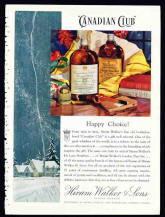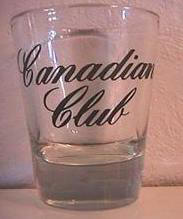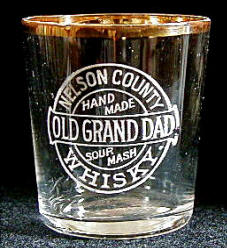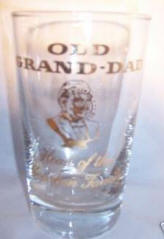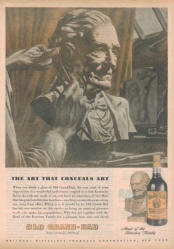|
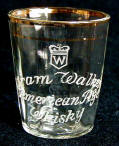
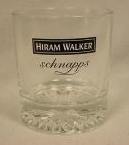 |
|
|
The Old and the New
(Part II) |
|
Part
II of this three-part series features glasses
from some of the stalwarts of the liquor industry.
One such icon is the Hiram Walker glass shown at left above.
In the first article I noted that it is sometimes not easy
to identify pre-pro and post-pro glasses. This glass is a
perfect example. Robin
notes in the pre-pro database that this might possibly
be a post-repeal glass.On the
other hand, it is clear that the Hiram Walker glass shown at
right above is fairly modern. |
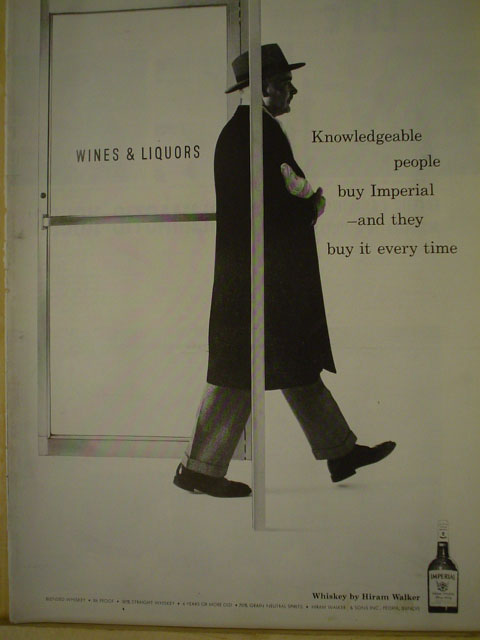 |
|
In the previous Common Stuff
article, I mentioned the Tennessee Squire glass, a glass that looks
pre-pro but is actually fairly new.
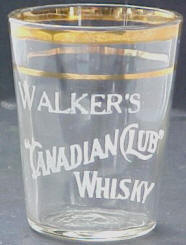 The
October 27, 2007, issue of
Shot of the Week also featured a “Looks to be pre-pro but really
isn’t” glass. This is the Walker’s Canadian Club Whisky shot glass.
Robin notes in this SOTW column that at one time it was hard to sell
these glasses at $9.99; now they go for $25.00. The
October 27, 2007, issue of
Shot of the Week also featured a “Looks to be pre-pro but really
isn’t” glass. This is the Walker’s Canadian Club Whisky shot glass.
Robin notes in this SOTW column that at one time it was hard to sell
these glasses at $9.99; now they go for $25.00.
The glassmaster was certainly prescient in his remarks. One of these
glasses sold on eBay quite recently. The hammer went down on November
12, 2007. The glass sold for $20.26, and it attracted six bids.
On the other hand, it is doubtful that the modern Canadian Club glass
pictured here would sell for anything but a fraction of $20.26.
Robin
notes in his website that John Henry Beam worked at the family
distillery on a farm near Mooresville, Kentucky. In about 1856 his
brother, D. M. Beam, began a distillery in Nelson County, but John
Henry, known as Jack Beam, continued to operate the farm distillery,
making only about one-half barrel a day. In 1866 he moved the operation
to a place on the railroad, which was afterwards known as Early Times
station in Nelson County.
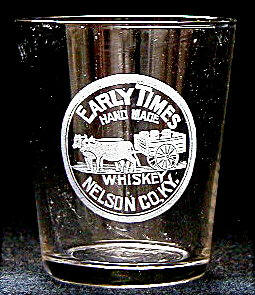
Note how this “early” Early Times glass
memorializes its Nelson County origin.
Compare this beauty to the two not-so-Early Times post-pro
glasses below. Clearly there is no comparison between the
old and the new. |
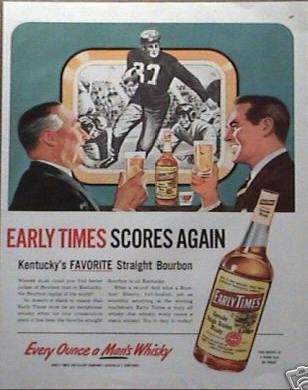 |
|
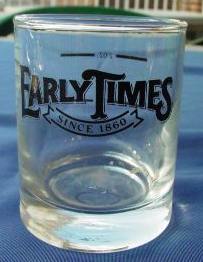 |
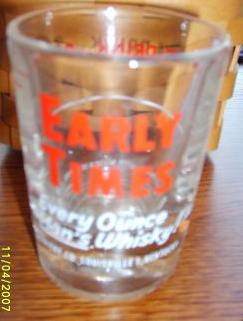 |
Here is another Nelson County glass, but this one advertises Old Grand
Dad whiskey. Compare this old glass to its modern equivalent.
“Old Grand Dad” is just one of many
whiskies that uses the word “old” in its name. For example,
the pre-pro website indicates that “Old Crow” was
first introduced by Dr. James C. Crow, who was born in
1789 in Scotland. He was a physician who emigrated to the
United States in 1823 and settled in Kentucky; it was
supposedly here where he discovered the importance of using
limestone water in whiskey making. Crow died in 1856. The
“Old Crow” brand had been established in partnership with
Oscar Pepper, who built the Old Crow distillery in about
1860.
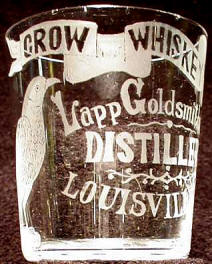 |
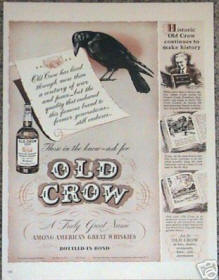
The old Old Crow glass depicted here
is certainly as described. The new versions are just as
certainly not old. Perhaps this brand should be called New
Crow? |
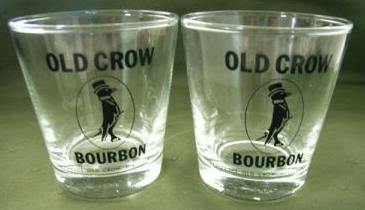 |
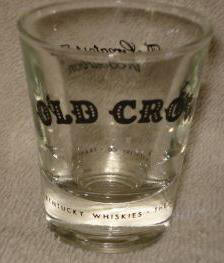 |
The website notes that John Garvin Brown, who had worked as a
salesman for a drug firm, organized a wholesale liquor business in 1870
with his half-brother, John Thompson Street Brown, Jr. The firm, J.T.S.
Brown & Bro., bought quality straight whiskies, which they blended and
sold as “Sidroc Bourbon,” “Atherton Bourbon,” and “Mellwood Bourbon.”
They later introduced the “Old Forrester” brand, which eventually became
“Old Forester.”
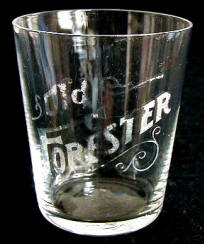 |
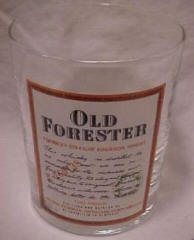 |
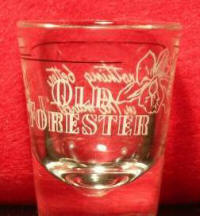 |
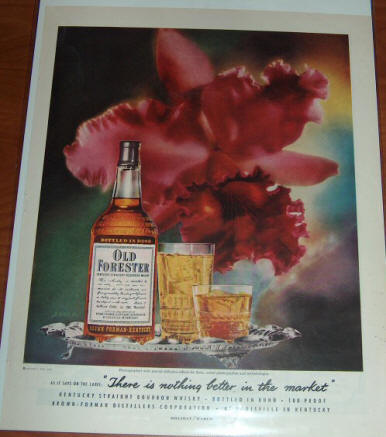 |
Again, compare the old
Old Forester glass with these two new Old Forester glasses.
to be concluded...
|
|



 The
October 27, 2007, issue of
The
October 27, 2007, issue of
